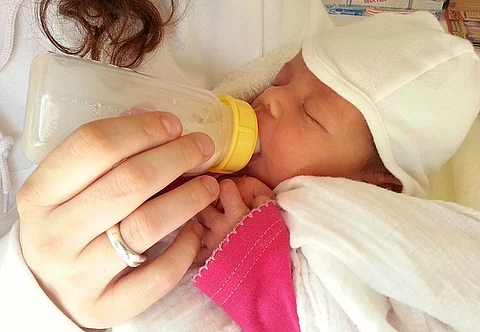

Women experience shame and judgement from the earliest moments of motherhood. Mothers commonly experience shaming in connection with childbirth and infant feeding, regardless of the type of birth they had or the feeding method used. The existence of “mother guilt” is so well acknowledged by social commentators it is almost a cliché.
But the experience we call “mother guilt” is not really guilt at all. What we are really talking about is shame; a painful emotional experience that can make us feel unworthy, unattractive, disliked or likely to be rejected. Although we can feel both at the same time, shame and guilt are quite different experiences.
An environment rife with shame is a fertile breeding ground for conflict, pitting mother against mother.
Evolutionary theory gives us a useful framework to understand the mother shame culture, and clearly distinguishes between shame and guilt.
Guilt plays an important role in our capacity to be care-givers. It discourages us from harming others and prompts us to repair the harm we have done. Guilt is unpleasant but it’s an important part of our moral life.
Shame, in contrast, is how we respond to social threat. For most animals, a social threat equates with physical aggression. So our evolved strategies for managing social threat are the kinds of responses that were useful to our ancestors when they were being physically threatened: escape and hide, adopt submissive behaviour towards the attacker, or fight back.
As a result, shame primes us for concealing, submissive and aggressive behaviour. It triggers a heady mix of humiliation, defeat, sadness, anxiety and anger. We may find ourselves hiding away, internalising the criticism and feeling fundamentally flawed within ourselves, or aggressively fighting back against those we perceive as responsible for our shaming experience.
Of course, our social world is much more complex than the animal world. We have evolved to be conscious of other people’s perceptions of us. Most of our social threats are not physical, but threats of rejection or the loss of our social place.
The social threat and shame are particularly toxic for new mothers, who often already feel socially vulnerable as they try to adopt a new social role. Shame and the submissive response strategies that instinctively swing into action can trigger low mood, anxiety and stress, and make us vulnerable to depression. Women who want to breastfeed but can’t, for instance, are particularly vulnerable to postnatal depression.
Shame also triggers instincts to conceal; to protect yourself from further social threats. In such an environment, we are unlikely to ask for help, instead seeing our mistakes and failures as harbingers of our social rejection.
The third impulse that shame creates in us is the instinct to fight back. While understandable, the instinct to aggressively defend against the threat by fighting back against those we perceive as responsible for our shaming experience further entrenches a shaming culture.
The so-called “mummy wars” are not only the result of our evolved instinctual response to shame, but also a breeding ground in which fresh shaming experiences are created. It is a vicious cycle.
Calling for an end to specific shaming experiences is not enough. And we must be careful not to succumb to our own aggressive impulses. Instead, we need to actively build a mother culture grounded in safety and acceptance.
If mothers are to successfully negotiate the steep learning curve of early motherhood, they must be free to experiment flexibly. To make mistakes. To ask for help. And to grow into their new roles. New mothers must feel safe and accepted within the social milieu.
Our MotherCare Project is investigating the experience of shame in motherhood, helping find ways to undo the toxic effects of shame. We are inviting mothers of babies under two years of age to participate in a brief online study.
Koa Whittingham, Psychologist and Research Fellow, The University of Queensland and Amy Mitchell, Research Coordinator, The University of Queensland
This article was originally published on The Conversation. Read the original article.